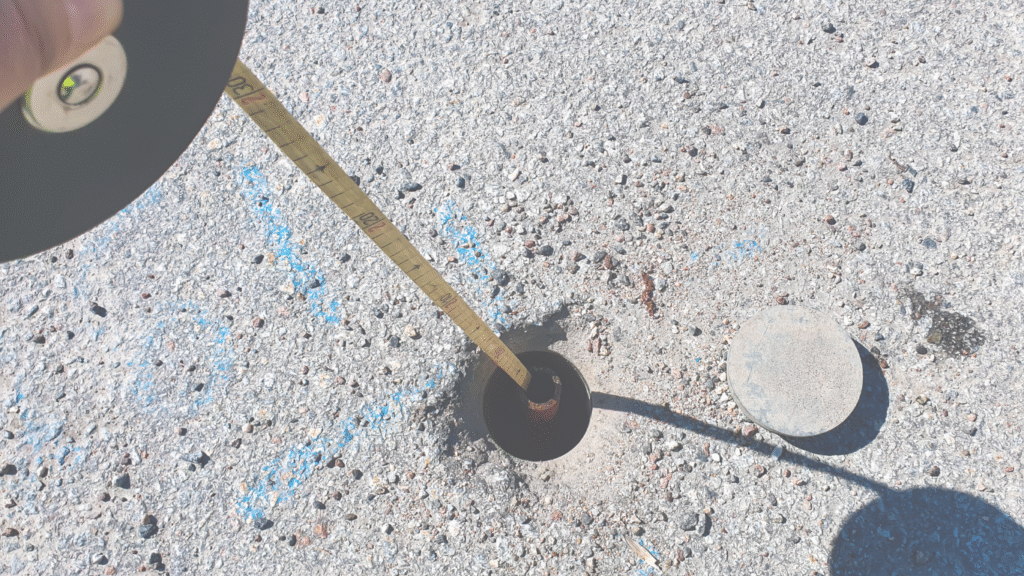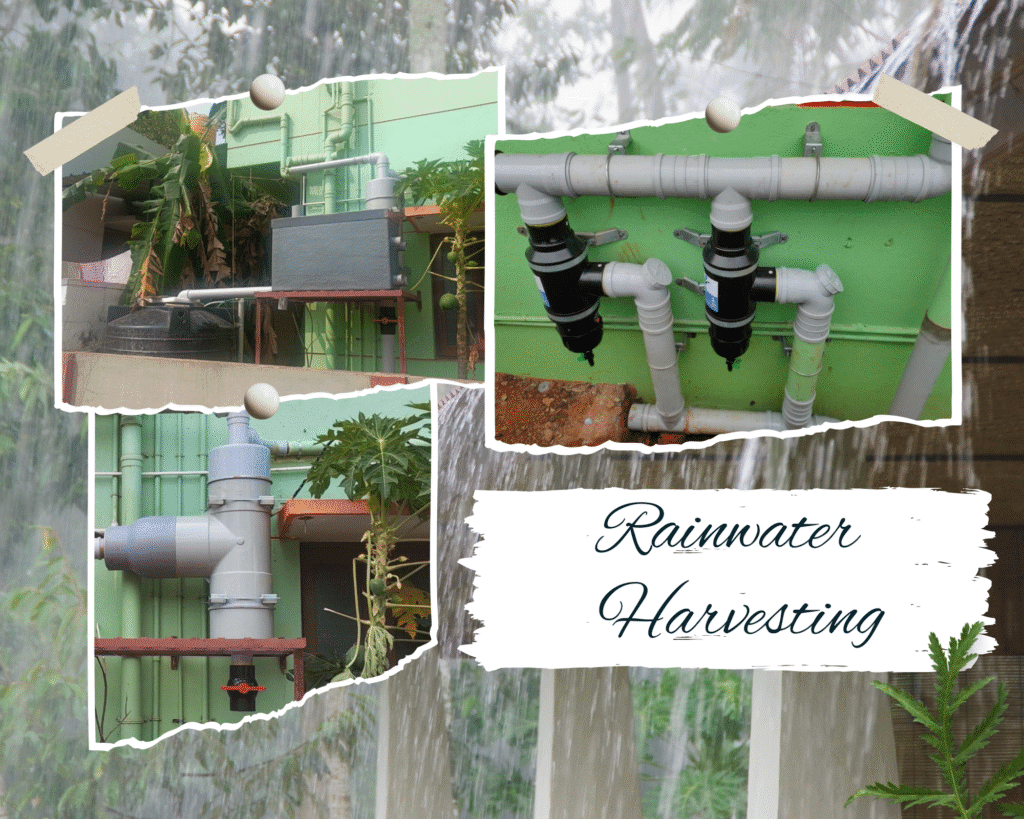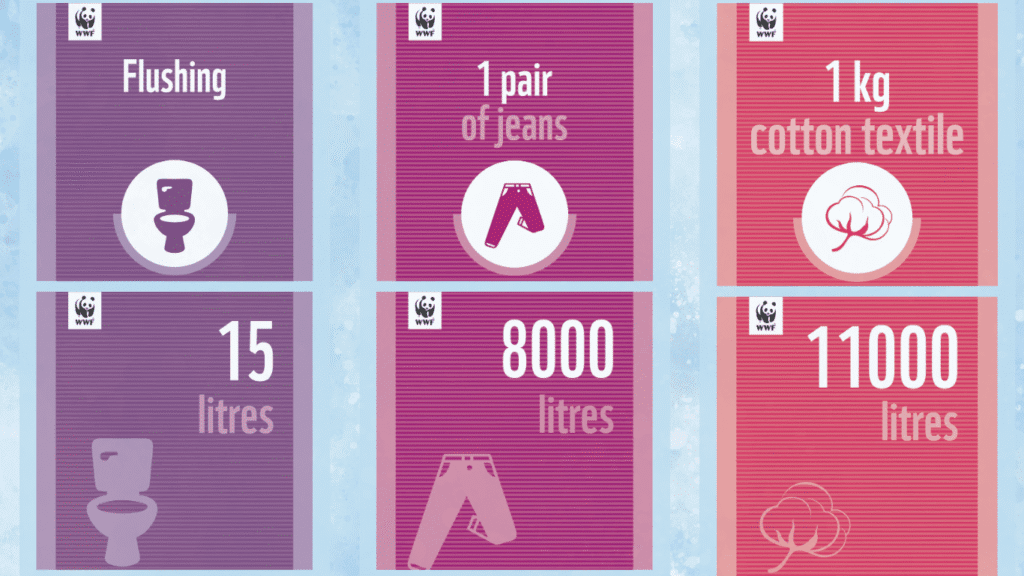From Sahara Vibes to Rain Wins — One Stunning Willpower Saga
According to WWF, 2.7 billion people face water scarcity for at least one month every year. And right now, Bengaluru is staring straight into that crisis. The city is growing fast — but with vanishing lakes, patchy rainfall, limited water supply, disappearing trees, and concrete jungles replacing green spaces, it’s been guzzling more than it can recharge. The strain on Bengaluru’s groundwater is real. Instead of watching the crisis spiral out of control, Ganesh Shanbhag rolled up his sleeves and showed how one person’s willpower, creativity, and smart thinking can make a real difference — starting right in his own neighbourhood.
Water Worries in Bengaluru
Summer decided to crash the party early this year, and with it comes the usual drama — soaring temps, sweaty afternoons, and, yep, a looming water crisis. And Bengaluru’s feeling the heat for real. In fact, a study reported that Central Bengaluru’s groundwater might drop by 5 meters, but in CMC zones, it could sink even deeper — between 10 and 15 meters!

Bengaluru’s been dipping into its groundwater stash for pretty much everything — washing cars, scrubbing homes, watering gardens, and all kinds of household stuff. But now, the overuse is coming back to bite. With supplies drying up, residents are left scrambling for expensive water tankers. The good news? BWSSB (Bangalore Water Supply And Sewerage Board) has come out with guidelines in hopes of turning the tide.
- BWSSB has strictly prohibited the use of potable water for non-essential purposes. Violators will face a fine of ₹5,000, with an additional ₹500 charged per day for continued misuse.
- Use treated water from STPs (Sewage Treatment Plants) for all non-drinking purposes. Buy from BWSSB if needed, set up dual pipelines, and build proper storage and supply systems for use across buildings and communities.
- Capture and store rainwater in rainwater harvesting (RWH) tanks and save it for sunny days.
Ganesh Shanbhag – The Solo Powerhouse

Thomas Jefferson’s words, “One man with courage is a majority,” ring true now more than ever — thanks to Ganesh, a Bengaluru techie with a mission. Faced with a water crisis in his community, he led the charge by implementing a classic, eco-friendly solution: rainwater harvesting to replenish the groundwater table.
We had a quick (and super insightful) chat with Ganesh Shanbhag, who proved that you don’t need a big label or expert badge to spark real change. With just the right mix of willpower, intent, and resourcefulness, he brought the time-tested rainwater harvesting technique back to life, giving it a modern twist for today’s urban world. What he’s done shows us that old-school solutions, when powered by purpose, can absolutely shape a sustainable future. Ready to hear it from the man himself? Let’s get into it.
Tanker Tears to Cheers — A Q&A with Ganesh Shanbhag
- Let’s start with an intro — who is Ganesh Shanbhag?
I’m a software engineer working in the hustle and bustle of Bengaluru. But beyond the screen, I’m rooted in a mindset that values traditional wisdom and sustainable living. I’m all about solving problems with simple, confident, and eco-friendly solutions — especially when they can make a real-world impact.
- You’ve been dubbed a rainwater champion in your community — what motivated you to step up and take the lead?
Well, there were two moments that really pushed me to take action. The first was back in 2018, when many of Bengaluru’s lakes were drained in the name of land reclamation aimed at urban expansion – think residential complexes, commercial hubs, and roads. What people didn’t consider was how these projects often ignored the ecological importance of lakes, leading to the loss of wetlands and rich yet at-risk ecosystems.
That hit me hard. So, along with a few fellow planet lovers, we staked out a 500 sq. ft. patch of land and kicked off a rainwater harvesting project — small space, meaningful change.
The second moment that truly strengthened my resolve came in 2019. That year saw heavy rainfall, and our modest setup stepped up — harvesting water efficiently and helping us save significantly on both water and tanker costs. But more importantly, it stirred the kind of awareness we had been hoping for. That’s when we knew — this was only the start.
- How did your community react when you first pitched the idea?
At first, people were skeptical—and honestly, who could blame them? Water conservation wasn’t a priority; water wastage was invisible, and efforts to save water felt trivial. But when the rainwater harvesting system started slashing tanker costs and cutting bills, the doubt turned to disbelief, then delight. Suddenly, every drop saved meant money kept in pockets. The proof wasn’t just in the pipelines, but in the profits. Before long, the question wasn’t ‘Why bother?’ but ‘How soon can I join?
- Tell us about the funding and financial impact of your early rainwater harvesting installation.
Our very first rainwater harvesting system was built with love, support from a few close friends, and a shared vision. I even got the chance to bring this vision home, helping my father set up a fully functional RWH system and a home-grown sewage treatment plant at our village house. What we spent was minimal compared to the long-term benefits. In fact, we recovered the investment in just 3–4 years — proof that small steps can truly lead to big financial gains.
- Since then, how many families/apartments have benefited from the RWH system, and what impact has it had post-installation?
Our sustainability journey began when we installed a rainwater harvesting system in our 88-apartment society. Before long, we took things further by making our entire complex completely water-positive and energy-positive through additional initiatives. We cut our water footprint and set up a sewage treatment plant that now recycles water for drinking purposes, installed solar panels to directly convert sunlight into DC power, and repurposed treated wastewater for household use.
The ripple effect has been incredible. We have since helped around 300 neighbouring apartments eliminate their dependence on water tankers and significantly reduce their utility bills. What started as a single project has grown into a thriving sustainability movement in our community!
- How demanding is the system in terms of maintenance?
Honestly, the system barely needs any maintenance—just some basic cleaning to remove debris now and then. The built-in filters do the heavy lifting by trapping dust and sediment from the rainwater. That said, we do recommend societies keep their terraces clean since that’s where we collect the water. And for extra safety, we always suggest testing the stored water periodically to rule out any contamination (those pesky pigeons can be trouble!). Beyond that? It practically runs itself.
- What advice would you give someone who’s just starting out?
Sustainability begins when we learn to harness nature’s five elements—air, water, fire, earth, and space—to their fullest potential. By balancing these, we restore harmony and move closer to true sustainability. If you’re curious about where or how to start, I’m always here to help. Feel free to reach out—I’d be happy to guide and support you in any way I can.
You can reach Ganesh at – ganesh4889@gmail.com
No More Water Woes—Just Wins and Good Vibes

What started as Ganesh’s solo side quest turned into a full-blown community flex. One rainwater system, 88 apartments, a proof of concept in a village house, and zero summer meltdowns later — his efforts became the blueprint for beating the water blues. The word spread faster than memes on a Monday, and now, he’s the go-to water hero everyone wants on speed dial.
The rainwater harvesting system didn’t just beat the summer heat — it beat the bills too. Fewer tankers, lower costs, and a happier Earth. So yeah, Ganesh proved that planet-saving can be pocket-friendly too!
Catch the full story straight from the man himself — here’s the YouTube link!
#BeWaterWise With WWF-India

Ganesh Shanbhag witnessed Bengaluru’s water crisis—skyrocketing costs, tanker dependence, and resident struggles. His ingenious system that transformed water conservation reminded us of WWF-India’s #BeWaterWise ethos: sustainability through mindful usage.
But this isn’t just about one city. Water is at the heart of life on our planet — yet it remains one of the most threatened natural resources today. Climate change, increasing human demands, and widespread pollution have placed immense pressure on our water bodies, impacting both people and nature. People often see water as an unlimited resource, but the reality is that freshwater is finite, and its availability is shrinking due to overuse and wastage.
Water Conservation: A Combined Effort
The biggest mindset shift needed is to recognize water as a precious shared resource that we all have a responsibility to conserve. That’s where Ganesh’s blueprint stops being just a solution and becomes a manifesto – one where every saved drop writes the future of water conservation.

One of the most surprising facts is that water consumption is not only through what we pour out of a tap or flush down a toilet; almost everything we use in our daily lives uses water. For example, producing one sheet of paper requires 10 litres of water, and it takes 2,700 litres of water to produce just one cotton T-shirt—equivalent to what an average person drinks in two and a half years! This highlights the hidden water footprint of everyday items we use.
The biggest challenge is that many people do not see an immediate personal impact of water scarcity until it’s too late. To tackle this, WWF-India looks at a multifaceted approach. WWF-India urges you to take the #BeWaterWise challenge by reducing your daily water footprint—start with a simple action like using refillable water bottles instead of buying plastic water bottles, it takes about two to three times the water a disposable bottle holds to actually make the bottle itself!
Shift Happens. Join In.
Massive props to Ganesh for slaying the sustainability game! Keep doing your eco-thing and inspiring the squad while you’re at it.

If you’ve ever had to skip a shower or chase a water tanker, you know the water crisis is no joke. It’s not just about inconvenience — it messes with hygiene, health, your mental peace, and yep, your bank balance too. The irony? Most of us are laser-focused on saving money, but barely think twice about saving water — until the bills (and tankers) show up.
And so, when Ganesh pulled a solo main character move, he transformed his water-challenged society into one that now thrives — both in sustainability and cost savings. You can totally do that too. Start small, go bold, and soon your crew — young and old — will be backing you up. One vibe shift at a time, we can make this planet less thirsty and way more future-ready. Let’s turn that chaos into change, shall we?
At Green Pistachio, we’re here to support your journey and help you turn those green dreams into action. Our arms (and hearts) are open to guide and amplify your mission. Got an idea that can spark change? We’re listening. Know someone creating impact? Tag them and we’ll proudly shine a light on their story. Together, we build a greener world, one shared effort at a time.
PS: Got taps? We got tips. We’ve got a flood of water-saving hacks coming your way. Don’t miss ‘em. Stay tuned.
Resources:
- https://nelda.org.in/rainwater-harvesting/#:~:text=Here%20are%20some%20recent%20statistics,water%20needs%20for%20a%20household
- https://www.statista.com/topics/5985/global-water-accessibility-and-stress/#topicOverview
- https://www.downtoearth.org.in/water/water-every-other-day-bengaluru-is-drying-up-destruction-of-lakes-is-the-reason-94672






